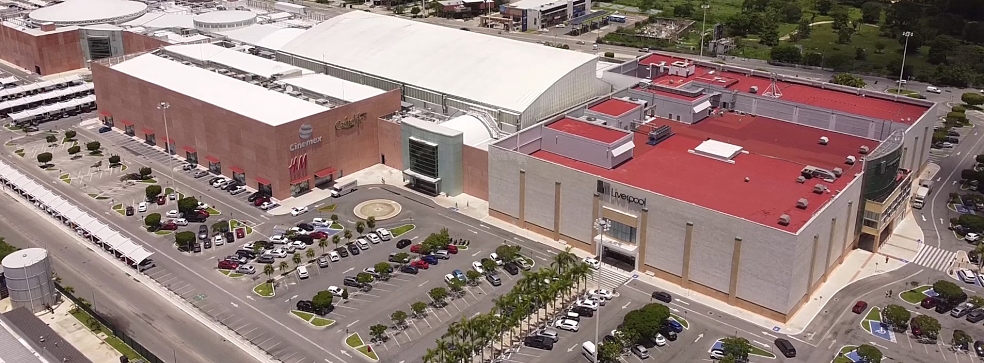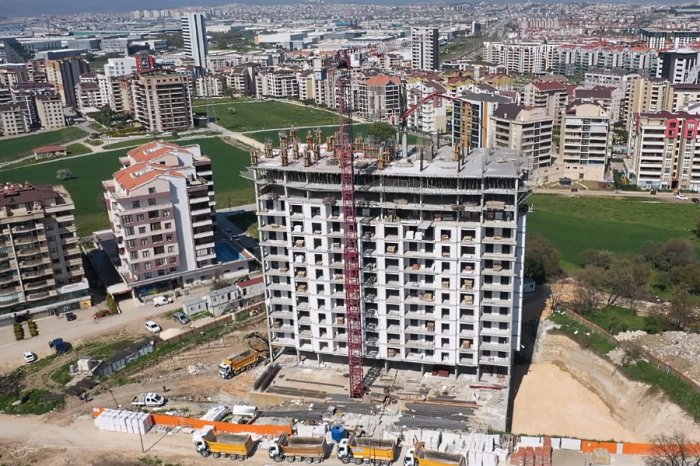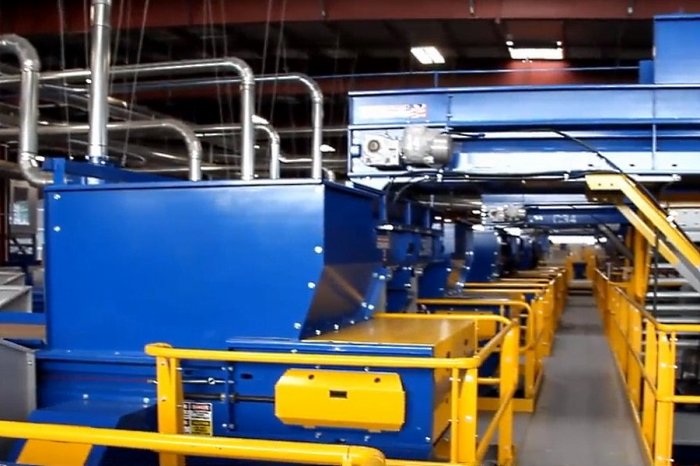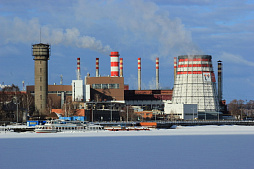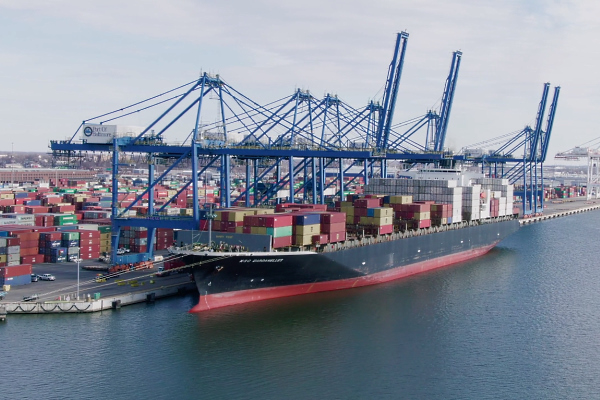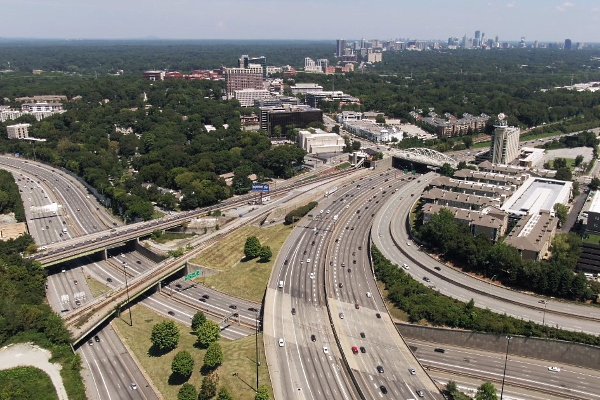After receiving the necessary documents (application form and project presentation), our team will try to review your request as soon as possible, and leading experts will offer the best options for project funding.
Multi-million dollar megaprojects are being built in the USA, UAE, UK, France, Japan and other leading economies of the planet, capturing the imagination of consumers and arousing the interest of investors and lenders in new retail formats.
This guide is intended to provide project owners and businesses clients with a thorough understanding of the financing terrain for retail real estate development, empowering them to make informed decisions and unlock the full potential of their projects.
Our team is ready to provide you with comprehensive support at any stage of the investment project, from planning a new shopping center and developing a viable financial model to raising capital.
Overview of the retail real estate market
The retail real estate market serves as a reflection of societal needs, preferences, and economic conditions.Understanding the current trends and dynamics within this area is critical for both project owners seeking financing and lenders aiming to align their investments with the market.
The global commercial and retail real estate market currently exceeds $35 trillion and continues to grow, including large shopping centers, entertainment venues and markets of various types.
Current trends and dynamics in the retail sector
The retail sector is undergoing transformation, influenced by the rapid integration of technology, shifts in consumer behavior, and global economic factors.E-commerce has become a formidable player, reshaping traditional models and prompting innovative approaches to physical spaces. The rise of experiential retail and omnichannel strategies are key drivers reshaping the industry.
Exploring these trends provides valuable insights into the types of retail spaces that are not only surviving but thriving. From the resurgence of neighborhood shopping centers to the emergence of mixed-use developments, staying abreast of these trends is important for project owners aiming to create spaces that resonate with the evolving needs of modern consumers.
Growing demand for retail spaces and shopping malls
Contrary to predictions of a retail apocalypse, there exists demand for well-conceived retail spaces and modern shopping malls.Consumers seek immersive experiences that extend far beyond mere transactions. Centers, evolving beyond traditional paradigms, are becoming real community hubs, offering a diverse range of services, entertainment, and dining experiences. This naturally requires large investment loans and other medium- and long-term financing options for the modernization of existing facilities or the construction of new retail spaces adapted to rapidly changing realities.
This new growing demand is fueled by human desire for social interaction and a tangible, sensory shopping experience. Successful retail real estate projects understand and capitalize on this demand, creating environments that blend commerce with community, and convenience with leisure.
Project owners that start the journey of financing and constructing retail real estate developments, must recognize and adapt to these market dynamics will be instrumental in ensuring the long-term viability and success of their business initiatives.
Importance of long-term financing in retail real estate
In the modern world of retail real estate development, the significance of properly selected long-term financing mechanisms cannot be overstated.It is not just a financial transaction but a strategic decision that can either propel a project to success or impede its progress. Understanding the role of financing is essential for project owners seeking to bring their initiatives to fruition.
Long-term capital serves as the lifeblood of retail real estate projects, providing the necessary capital to acquire land, design and construct trade spaces, and implement marketing and operational strategies. Beyond the initial acquisition, the ongoing operational costs, tenant improvements, and unforeseen challenges all necessitate a reliable and flexible financial model.
The ability to secure appropriate financing can mean the difference between transforming a vision into a thriving retail space and watching opportunities slip away. It is not just about securing funds but aligning the financial strategy with the unique needs of the retail sector.
How strategic finance enhances retail project viability
Strategic finance goes beyond the mere injection of funds; it involves a deep understanding of the project's goals, risks, current situation and market fluctuations. Below we have briefly explained how strategic finance can enhance the viability of retail real estate projects.Table: Key components of strategic financial decisions in the development of retail facilities
| Key components | Recommended measures |
| Mitigating risk and enhancing flexibility | Identifying potential risks early in the project lifecycle |
| Designing financing structures that provide flexibility in adapting to unforeseen challenges | |
| Mitigating risks related to market, construction delays, or changes in consumer behavior | |
| Optimizing capital structure | Balancing debt and equity components to create an optimal capital structure |
| Managing leverage to ensure the project remains financially sustainable and profitable | |
| Choosing instruments that align with the project's timeline and cash flow projections | |
| Aligning with market trends | Staying attuned to market trends and tailoring financing to support innovative retail concepts |
| Embracing sustainable and experiential retail trends through financing mechanisms that encourage such business initiatives | |
| Leveraging financing to create adaptive spaces that resonate with consumer preferences | |
| Building strong lender relationships | Cultivating relationships with lenders who understand the intricacies of retail real estate |
| Establishing open communication channels to navigate challenges collaboratively | |
| Leveraging lender expertise and resources beyond capital, such as retail market insights |
In essence, strategic finance is not a one-size-fits-all approach. It is a dynamic and iterative process that aligns financial instruments with the unique characteristics of the retail sector. By recognizing the importance of financing and adopting a strategic approach, project owners can position their retail developments for long-term success in a dynamic and competitive market.
Retail project financing, when tailored effectively, acts as a catalyst, enabling developers to navigate challenges, adapt to market shifts, and capitalize on emerging trends.
Retail project development using traditional bank loans
Traditional bank loans have long been a staple in retail sector financing, offering a conventional and well-established avenue for project owners in the retail real estate sector.Understanding the advantages, disadvantages, approval criteria, and the application process is crucial for project owners considering this financing option.
Advantages of traditional bank loans
One of the primary advantages of these instruments is the potential for much lower interest rates compared to some alternative financing options. This can significantly reduce the overall cost of capital for retail real estate projects, contributing to enhanced profitability.Banks typically have well-defined and standardized processes for loan applications and approvals. The familiarity of these processes can simplify application process for retail project owners, providing a clear roadmap to long-term business success.
Establishing a banking relationship can lead to additional financial services and support beyond the initial loan. Long-term relationships with banks can be valuable for future projects and their needs.
Disadvantages of traditional bank loans
Banks often have strict eligibility criteria, which can limit access for projects with higher risk profiles or unconventional structures. The stringent requirements may pose challenges for new developers or projects with less traditional models.Due diligence process in traditional banks can result in a longer approval timeline. Delays in securing funding may impact the project's ability to capitalize on time-sensitive opportunities.
Usually banks may have rigid terms and conditions, offering limited flexibility in tailoring loans to unique project needs. This lack of adaptability can be a disadvantage in dynamic market conditions or for retail projects with specialized requirements.

Criteria for long-term loan approval
Banks typically assess the financial stability of the borrower, including credit history, liquidity, and existing debt obligations. Demonstrating a strong financial position enhances chances of approval. Long-term loans for such initiatives can be issued for a period of 10 years or more.Lenders evaluate the viability of the retail real estate project, considering factors such as market demand, location, and feasibility studies.
These projects can include shopping centers / malls, standalone retail stores, outlets, lifestyle centers, and mixed-use developments that integrate retail spaces with other functions like residential, office, or entertainment. A well-documented and compelling business plan is crucial to demonstrate project viability.
The availability and quality of collateral, such as the property itself, play a significant role in the approval process. Banks calculate the loan-to-value ratio to assess the risk associated with the loan amount in relation to the property value.
Loan application process and timeline
Understanding the nuances of traditional bank loans is vital for retail project owners navigating the financing for their retail real estate ventures. While offering stability and lower interest rates, these loans come with specific requirements and processes that demand careful consideration.The financing process consists of the following sequential stages:
1. Pre-application due diligence. Project owners should conduct thorough due diligence on their financials and project details before approaching the bank. Preparing a comprehensive business plan and supporting documents is crucial.
2. Initial application submission. Submitting the loan application along with required documentation, including financial statements, project plans, and legal documents. The initial submission triggers the bank's review process.
3. Due diligence and underwriting. Banks conduct a detailed analysis of the borrower's financials, the project's feasibility, and associated risks. This stage may involve site visits, interviews, and additional document requests.
4. Loan approval or rejection. Based on the underwriting process, the bank either approves, rejects, or proposes modifications to the loan terms. Approval is contingent on meeting all financing criteria and conditions.
5. Closing and disbursement. Once approved, the loan moves to the closing stage, where legal documents are finalized, and funds are disbursed. The timeline from application to closing can vary but often takes several weeks to months.
Commercial mortgage in retail real estate financing
The so-called commercial mortgage loans represent a flexible and widely utilized financing option for retail real estate projects.As owners consider this avenue, a comprehensive understanding of the overview, eligibility criteria, and key terms such as interest rates is essential.
Overview of commercial mortgages
Commercial mortgages are loans secured by business properties, such as retail spaces, shopping centers, or mixed-use developments. These loans are structured based on the income-generating potential of the property, often featuring terms and conditions tailored to the sector.Commercial mortgages are primarily used for acquiring or refinancing large income-producing properties. They are suitable for retail real estate projects where the property's cash flow is a key factor in loan approval.
These loans typically have a fixed repayment period, with monthly payments covering both principal and interest. The loan structure may include balloon payments, where a significant portion of the principal is due at the end of the term. The property being financed serves as collateral, and the loan is secured by a mortgage or deed of trust.
Eligibility criteria and documentation
Commercial mortgage lenders assess the type and intended use of the property, ensuring it aligns with their lending criteria. For large capital-intensive retail real estate, demonstrating the property's income potential and adherence to zoning regulations is crucial.Lenders evaluate the financial stability of the borrower, considering credit history, income, and debt obligations. Strong financials increase eligibility and may impact interest rates.
Lenders assess the property's ability to generate sufficient income to cover payments. A favorable Debt Service Coverage Ratio (DSCR) indicates the property can comfortably service the debt. An independent appraisal is conducted to determine the fair market value of the property. Lenders use the appraised value to calculate loan-to-value ratios.
Lenders may require environmental assessments to identify risks associated with the property. Clear and marketable title is crucial, and title reports are typically part of the due diligence process.
Loan-to-value ratios and interest rates
Loan-to-Value (LTV) ratio is a key metric that expresses the loan amount as a percentage of the property's appraised value. For commercial mortgages, LTV ratios typically range from 70% to 80%, depending on factors such as property type and market conditions.Commercial mortgage interest rates vary greatly based on factors like market conditions, borrower creditworthiness, and the loan term. Rates can be fixed or variable, and longer-term loans may have slightly higher rates.
The amortization period determines the loan repayment schedule. While loan terms may extend for, say, 20 or 25 years, amortization period could be longer, providing flexibility in monthly payments.
Understanding commercial mortgage loans is crucial for project owners seeking financing for retail real estate developments. By aligning eligibility criteria, documentation, and key terms with project goals, owners can leverage these loans to optimize capital structure.
The role of construction loans in retail financing
Construction loans are a specialized form of financing tailored to the unique needs and challenges of developing retail real estate projects.Understanding the nuances of construction financing, including the draw process, project milestones, and risk management strategies, is essential for project owners embarking on the journey of bringing their retail visions to life.
Understanding construction financing
Construction loans are specifically designed to fund the development phase of a project, covering costs such as land acquisition, site preparation, construction, and initial operating expenses. These loans are typically short-term and transition into long-term financing upon project completion.During the construction phase, borrowers usually make interest-only payments based on the drawn amount rather than the total approved loan amount. This feature helps manage initial cash flow and aligns payments with the ongoing development process.
Funds are disbursed incrementally, based on the completion of predetermined project milestones. The process ensures that funds are allocated as needed and mitigates the risk of misappropriation.
The draw process and project milestones
The project owner submits an initial draw request, outlining the planned use of funds for the early stages of construction, such as site preparation and foundation work. The lender reviews the request and, upon approval, releases the corresponding funds.Draws are subsequent requests for funds tied to specific project milestones, such as completion of framing, roofing, electrical work etc. The draw process requires project owners to provide evidence of completed work, including invoices, inspections, and photographs.
Lenders often conduct site inspections to verify the completion of milestones before approving subsequent draws. The inspections help ensure that the project is progressing as planned and in compliance with building codes.
Efficient project management is crucial for aligning the draw process with actual construction milestones. Project owners should have robust systems in place to track its progress, manage timelines, and communicate effectively with lenders.
Managing cost overruns and delays
Including a contingency budget in the initial project cost estimate helps address unforeseen expenses. Lenders may also require a contingency fund to mitigate the risk of cost overruns.Open and transparent communication between project owners and lenders is vital in the event of delays or unexpected challenges. Proactive communication helps lenders understand the reasons behind delays and allows for collaborative problem-solving.
Some construction loans require performance guarantees, ensuring that the project is completed within a specified frame. These guarantees may involve penalties for delays or cost overruns.
Negotiating a flexible draw schedule can provide flexibility in adapting to unexpected delays. Lenders may work with project owners to adjust draw milestones based on realistic timelines.
Construction loans offer a strategic financing solution for the dynamic and capital-intensive process of developing retail real estate. By mastering the process, effectively managing project milestones, and implementing robust risk mitigation strategies, project owners can navigate the complexities of construction financing and steer their retail projects towards successful completion.
The role of private equity and joint ventures
Private equity and joint ventures present alternative financing structures for retail real estate projects, offering a collaborative approach that goes beyond traditional financing.Understanding these investment options, the dynamics of collaborative partnerships, and the delicate balance between control and shared risk is crucial for project owners seeking diversified funding strategies.
Exploring equity investment options
Private equity involves raising medium- and long-term capital from investors to fund a retail real estate project. Investors become partial owners, sharing in the project's risks and potential returns.Private equity can come from institutional investors, high-net-worth individuals, real estate investment funds, or even family offices. Each source may have different expectations, risk appetites, and investment horizons in each specific case.
Investors typically seek a return on their equity through a share of the project's profits or appreciation in property value. The structure may involve preferred returns, profit-sharing arrangements, or other equity participation models.
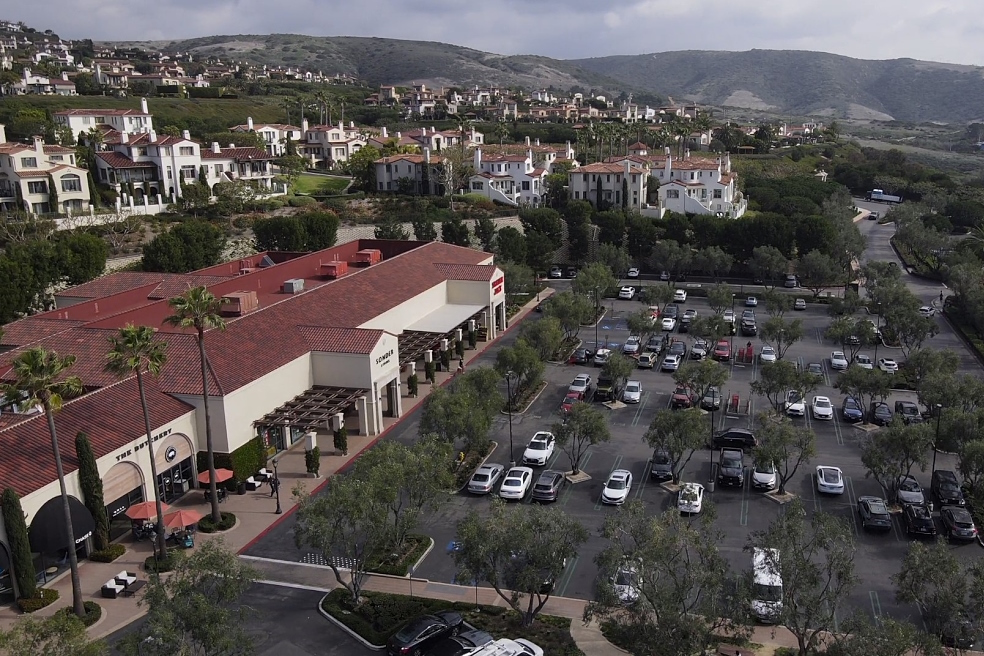
Collaborative partnerships for retail real estate development
Joint ventures (JVs) involve collaboration between project owners and equity partners to develop a retail property. Partners contribute capital, expertise, or both, forming a mutually beneficial alliance.These ventures often bring together entities with complementary strengths, such as developer with local market knowledge and an equity partner with financial resources. Strategic alliances leverage the unique strengths of each party to enhance project success.
Successful joint ventures hinge on aligning the interests of all parties. Clear communication, shared objectives, and a well-defined agreement are critical for ensuring harmony throughout the project.
Balancing control and shared risk
Defining control mechanisms is essential to safeguard the interests of both project owners and equity partners. Key governance structures, decision-making processes, and dispute resolution mechanisms should be clearly outlined.Balancing control involves determining how profits will be shared. Negotiating equitable profit-sharing arrangements that align with contributions, risks, and responsibilities is crucial.
Shared risk is inherent in equity partnerships, but effective risk mitigation is vital. Proactive risk identification, contingency planning, and contractual safeguards contribute to resilient partnership.
Establishing clear “exit strategies” is essential to navigate potential changes in project direction or market conditions. Agreed-upon exit mechanisms, such as buy-sell provisions, provide a structured way to handle transitions.
Private equity and joint ventures offer project owners access to capital and strategic expertise, enabling them to undertake ambitious retail real estate projects. By exploring equity investment options, strengthening collaborative partnerships, and striking a balance between control and shared risk, project owners can leverage these alternative models to optimize returns and achieve success.
Creating a strong loan proposal
Embarking on a retail real estate projects more than vision and ambition.It demands a well-crafted loan proposal that serves as the blueprint for financial success. This process includes a number of elements, from a comprehensive business plan, where project narratives are woven with financial foresight and risk analyses, to the evaluation of site feasibility and legal compliance.
Comprehensive business plan
Crafting a compelling project narrative is integral to the loan proposal.Owner should articulate the project's vision, goals, and unique value proposition, providing lenders with a clear understanding of the retail real estate venture. The narrative should convey how the project aligns with market trends, consumer demands, and the competitive terrain.
Additionally, financial projections and risk analysis form the backbone of a comprehensive business plan. Project owners must present detailed income statements, balance sheets, and cash flow forecasts, offering a realistic portrayal of the retail project's financial viability. Conducting a thorough risk analysis, including potential challenges and mitigation strategies, demonstrates a proactive approach to navigating uncertainties, instilling confidence in lenders.
Market research and demand analysis are crucial components. A deep understanding of consumer behavior, preferences, and the overall market landscape informs strategic decisions. Analyzing the demand for the proposed retail space, including potential customer demographics, helps borrowers align their offerings with market needs, enhancing the project's appeal to lenders.
Shopping center location and project feasibility
Assessing location and site-specific factors is pivotal for project feasibility.This includes analysis of the accessibility, visibility, and proximity to target demographics, ensuring the selected site aligns with the project's objectives. A strategic site selection enhances the project attractiveness to lenders.
Crafting the project's design and concept is equally essential. Tailoring the retail space to align with market trends and consumer preferences enhances its competitiveness. Collaborating with architects and designers to create an innovative and appealing space contributes to the project feasibility.
Anticipating challenges and proactively mitigating risks are critical elements of project feasibility. Whether related to construction process complexities, market dynamics, and external factors, a comprehensive risk mitigation strategy showcases project owners preparedness and adaptability, reinforcing the project's feasibility in the eyes of lenders.
Legal and regulatory compliance
Navigating zoning and land use regulations is a fundamental aspect of project development.Ensuring alignment with local ordinances and community planning demonstrates a commitment to responsible development practices. Retail project owners should engage with local authorities, seek necessary approvals, and address any potential zoning challenges.
Environmental impact considerations are increasingly significant in project development. Conducting thorough assessments and adhering to sustainability standards not only aligns with global environmental consciousness but also mitigates potential legal and reputational risks.
Ensuring compliance with building codes and permits is a non-negotiable aspect of project development.
A rigorous adherence to regulatory requirements streamlines the construction process, minimizes the risk of legal complications, and instills confidence in lenders regarding the project.
ESFC Investment Group brings together a multidisciplinary team of professionals with international experience who offers a full range of services related to the financing of retail real estate. We help clients organize project finance schemes for large projects, including attracting long-term loans.
Contact our representative to find out more.



